Well, the Cybils race is on and I'm so excited to share with you my thoughts about the first 18 of 176 books nominated for the Fiction Picture Book award! The Cybils committee has described an award-winning Fiction Picture Book as "a celebration of story and illustration, with lasting appeal for kids and/or adults. The best picture books completely excel in art, story, kid-friendliness, and adult appeal. A Cybils-winning picture book adds that special "It Factor." In message, in world-view, in connection, in humor, in reach, a book with "It Factor" rises to a higher level." (Cybils: 2009 Nominations Fiction Picture Books).
For my own review of the nominated books, I am doing mini-reviews just to get my initial thoughts on the books out there!
 Goodrich, Carter.
Goodrich, Carter.The Hermit Crab.
June 2009.
Simon & Schuster Books for Young Readers.
The story told here is simple yet moving - a hermit crab who wishes to remain a hermit (in every sense of the word) despite his "heroic" actions. The beautiful illustrations definitely help set the atmosphere for under-sea life while adding to the intensity of the message shared - it's important to do good deeds (and treat others as you wish to be treated) without requiring or even wanting recognition as a hero. Adults are sure to appreciate teaching children modesty in their doing of good deeds.
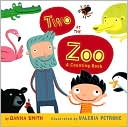 Smith, Danna.
Smith, Danna. Two at the Zoo.
February 2009.
Clarion Books.
This is a great story focusing on counting and one-to-one correspondence. It also accurately depicts animals that you'd expect to see at the zoo. That being said though, this book doesn't have a huge reach. It's geared toward young children (2-5) who are just becoming familiar with the concept of numbers and counting. It won't likely appeal with older children, despite the rhyming text which usually helps draw readers in.
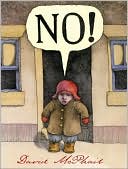 McPhail, David.
McPhail, David.No!
March 2009.
Roaring Brook Press.
This wordless picture book is appropriate for very young children who are not yet reading on their own, but like to create stories and "read" based on the pictures in a book! While I found some of the illustrations seemingly unappropriate for children, I think that with carefully discussion prior to distribution of the book, children would be able to maturely handle the story. The story portray a strong message: In order for the world to be a safe place, there must be an appreciation and acceptances of the diversity among individuals. My earlier review of No! can be found here.
 Urban, Linda.
Urban, Linda.Mouse Was Mad.
May 2009.
Harcourt Children's Books.
From my raving initial review (found here), my thoughts on this book have not changed too much! The perfect length, teamed with the kid-friendly language, the import message being taught and the cartoonish characters that are accurately portrayed will have children loving this book as much as adults. Parents will appreciate the idea of teaching children about effective ways of dealing with their anger - that hopping, stomping, screaming, and rolling-around-on the ground aren't always the best way to deal with anger. You have to find effective anger management techniques that work for you - standing silent and still, writing your feelings in a journal, painting... there are any number of ways that are more appropriate than acting out to deal with anger. And since all children (and even adults) experience anger at some point, this book is more than appropriate for all!
 Restrepo, Bettina.
Restrepo, Bettina.Moose and Magpie.
June 2009.
Sylvan Dell Publishing.
All of Sylvan Dell Publishing's books are wonderful books to consider for use in any science curriculum. This particular book focuses on the migration of moose in winter, making it a perfect fit for an "Animals in Winter" thematic unit. While there's no strong moral message taught, the book is very education and children will likely appreciate the colorful, realistic portrayals of both Moose and Magpie, as well as Magpie's jokes that are told throughout the story along the migration route. An earlier review of this book can be found here.
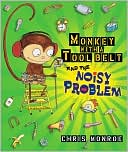 Monroe, Chris.
Monroe, Chris. Monkey With a Tool Belt and the Noisy Problem.
April 2009.
Carlrhoda Books.
This very funny, well-organized story is sure to appeal mostly to boys, due to the draw of tools and tool belts. As for girls, I'm not so sure. I haven't had an opportunity to introduce it with any children. The illustrations thoroughly support the story, being very colorful and full of details that will help children catch on to the use of everyday tools. I didn't find any strong moral-type message within this book, but I think it would be a wonderful father-son read aloud when the men in your life need some bonding time! You can read my previous review of Monkey with a Tool Belt and the Noisy Problem here.
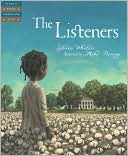 Whelan, Gloria.
Whelan, Gloria. The Listeners.
September 2009.
Sleeping Bear Press.
An important message about the value of listening is portrayed through the eyes of a slave child as a group of them use the "skill" of listening to try and determine the fate of their families' lives. As this book definitely shows, there is much to be learned from simple, active listening! The illustrations (mainly which depict night time) help set the dark mood that reveals what life as a slave was like. I think this book will allow children to better relate to what slavery really was all about, as they will be seeing children their own age going through entirely different things than themselves. Children should easily be able to see that with active listening, these slave children were able to change their fate. If they can make that connection, children will recognize that if they pay attention to their surroundings, they will be much more in-tune with life and prepared for what's to come!
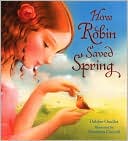 Ouellet, Debbie.
Ouellet, Debbie.How Robin Saved Spring.
March 2009.
Christy Ottaviano Books (Henry Holt).
This book shares with youngsters (and readers of all ages) the tale of how seasons pass and then come to be. The magical, colorful illustrations set the scene for the story and children (especially those living in locations that experience all four seasons) will easily connect with the animals' urgency for spring's arrival! The humorous attempts of all the different animals to awaken Sister Spring and silence Lady Winter make book all the more better! My more detailed review with learning activities can be found here!
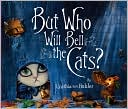 VonBuhler, Cynthia.
VonBuhler, Cynthia. But Who Will Bell the Cats?.
September 2009.
Houghton Mifflin Books for Children.
Answering Aesop's age-old question, "Who will bell the cats?," Cynthia VonBuhler's latest book also teaches children an extremely valuable lesson - one that will last a lifetime - hard work and dedication coupled with persistence do pay off! The very colorful illustrations helps set the mood and draws readers into the story, enabling children to connect with the mice's efforts to finally bell the cats after numerous (yet funny) failed attempt.
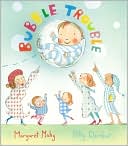 Mahy, Margaret.
Mahy, Margaret. Bubble Trouble.
April 2009.
Clarion Books.
My initial review of Bubble Trouble, found here, shows my mixed feelings about the book. Since that review, I've talked with numerous other people who have also had the opportunity to review the book. With the help of their explanations, I've come to realize that this is the type of book that is meant solely as a read-aloud. In order to fully appreciate the humor within this story, it must be read-aloud by someone who puts that extra fluctuation in their voice - someone who comes alive when reading and elicits excitement! If you have someone who can read this book in that nature, let me tell you, your children will definitely enjoy this. The illustrations only add to the story, with their almost scrapbooked-appearance! While connection and message for children seem to be lacking, the humor and read-aloud quality definitely make this a book worthy of being shared!
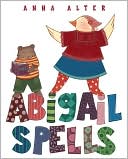 Alter, Anna.
Alter, Anna. Abigail Spells.
April 2009.
Alfred A. Knopf.
Alter takes a very clever approach to teaching children a very important message in this story - she uses a spelling bee! The characters, whom will definitely appeal to young children provide the bright color that is needed to draw in readers initially. Once readers are drawn in, they'll for sure pick up the message Alter intends for readers - Winning isn't everything. A good friend is just as much, when not more important than a good win. A good friend will always be there - the win is only temporary! Children will surely relate to this in some aspect, as they'll likely be able to mention a time when a good friend was able to help them overcome the sadness of a loss. You can check out my first review of Abigail Spells here.
 Warburton, Tom.
Warburton, Tom.1000 Times No.
April 2009.
Laura Geringer Books (HarperCollins).
A toddler's favorite word - "NO" is celebrated in this multi-language book! While adults may not wish to teach their child how to say no in any more languages, children will surely be eager to pick up this book and set to work learning! The downfall I saw in this book, was at the end when little Noah finally learned the other answer parent's wish to hear, "YES." It was used in the context of bribing Noah to the park in order to end his use of the word "No." He says yes, but I don't feel mother should have given in at that point after the "no" tantrum we'd heard throughout the story. I just felt that this will empower children to seek their way all the time. However, if used with older children, who have learned the yes/no concept, this book could be used educationally to introduce new languages! You can see my thoughts on using the book in this manner by clicking here.
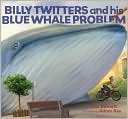 Barnett, Mac.
Barnett, Mac. Billy Twitter and His Blue Whale Problem.
June 2009.
Disney*Hyperion Books.
Realistic life-like looking people almost have you believing this could be a true story that's very well told with a clear beginning, middle and end. There is a lot of humor that is evident and will be easy for children to recognize. Many children will readily connect with this story because they've surely shared some of the same emotions that Billy experienced. This will likely enable them to quickly pick up the important message being conveyed by Barnett - listen to your parents and take care of your responsibilities!
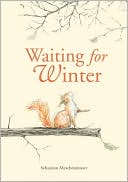 Meschenmoser, Sebastian.
Meschenmoser, Sebastian. Waiting for Winter.
June 2009.
Kane Miller (EDC Publishing).
While a squirrel excitedly awaits his first arrival of winter, he encounters a variety of other forest animals who attempt to help him in his eagerness. The illustrations are simple, yet allow the main characters to stand out in the pencil-drawings. I think kids will definitely connect with the anticipation of waiting for winter and will find many of squirrel's objects that represent winter to be quite humorous. I will be honest with saying this book had a hard time holding my attention span, as I just had a hard time connecting with some of what was going on.
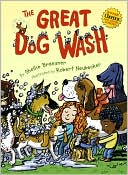 Braeuner, Shellie.
Braeuner, Shellie.The Great Dog Wash.
July 2009.
Simon & Schuster Books for Young Readers.
This story is funny and well written! The rhyming text quickly drew my attention, as it will with children! What I really liked about this book was the depiction of children of all ethnicities, working together to accomplish the "Great Dog Wash." The depiction of multiple ethinicities should encourage children about the importance of working together, while promoting cooperative work and learning. While there was no hugely obvious message, I would take away from this book that hard work pays off, as the dogs participating in the "Great Dog Wash" cause all sorts of mischief for these poor children!
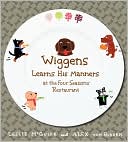 McGuirk, Leslie.
McGuirk, Leslie. Wiggens Learns His Manners at the Four-Seasons Restaurant.
August 2009.
Candlewick Press.
Manners are a big part of getting along world-wide! Wiggens and his obedience class at the Four Seasons Restaurant aim to teach children appropriate manners for dining out. While Wiggens being a dog will certainly help to capture children's attention, I fear that they will not make a connection that the manners they need to consider when eating out are the same as those that Wiggens is trying to teach them. If this is blatantly discussed with children, I think this book is a good resource for children who are in need of learning manners.
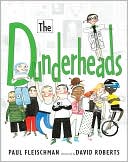 Fleischman, Paul.
Fleischman, Paul. The Dunderheads.
June 2009.
Candlewick Press.
Children will likely find this book hilarious... I kind of liked the message that the "Dunderheads" sent their teacher, but overall, I wasn't a huge fan of the book itself. I didn't feel this book accurately depicts a teacher. Most teachers are in their profession because they enjoy working with students, not cutting them down. However, I know that children don't always see this side of their teachers for whatever the reason, so I'm keeping an open mind! The length of the book was also another downfall that I noticed, although it probably would make the book appropriate for an older age range (8-12). The comic-y, almost gothic-like appearance of the illustrations would also catch the eye of older readers. I'm open for thoughts. Are you familiar with this book? Have you read it with your child(ren)? What are you thinking?
 Sauer, Tammi.
Sauer, Tammi.Chicken Dance.
August 2009.
Sterling Publishing.
This is definitely a book choice if you're looking for a fun barnyard read-aloud. The bright, colorful illustrations nicely complement the feel of the text. The story itself is full of humor that kids will likely be able to pick up on and shows an appropriate, healthy amount of competition among different groups (in this case, barnyard animals) "friends."
If you're interested in finding out more information about any of the books reviewed or if you'd like to purchase the books, click the cover image for a link to Amazon.com.








2 comments:
I've read Monkey with a Toolbelt to my preschool storytimes, on school visits to various ages, and to 1st and 2nd grade school visits. Every group loves it, boys and girls alike!
Thanks, Katie. I'll have to check some of these out.
Post a Comment